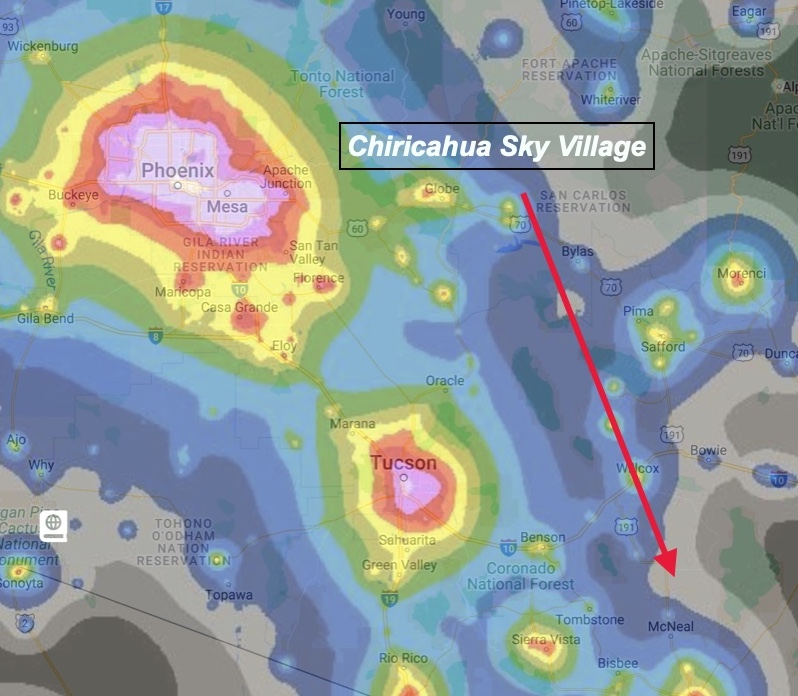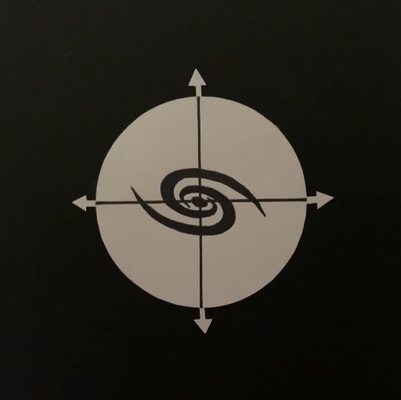The ideal dark sky location for an astronomer is where at night essentially all the visible light is coming from the sky. When you are in such a place for the first time (and your eyes have had sufficient time to become dark adapted – through dilation of your pupils) the sky looks like a carpet of stars. Initially identifying constellations actually seems difficult because there are just so many more stars to see than in an urban or suburban setting. It is a breathtaking experience even for those who see it regularly. Chiricahua Sky Village approaches an ideal dark sky location.
For visual astronomers their experience is totally transformed by being at CSV, especially for objects outside the solar system (star clusters, nebulae and galaxies). Both brightness and contrast are improved immensely. Astrophotographers take advantage of the increased light flux to image objects with shorter exposure times or to push even deeper into space with their imaging.
The image below from DarkSkyMap.com shows a light pollution map for central and eastern Arizona. The regions in gray (including CSV) are the darkest areas in the state and are classified as Bortle 1-2 on the Bortle dark sky scale.

